I've been searching for a circuit that has a centralized switch, with 4 different switches for separate groups of LEDs.. and all I get for a result are diagrams without a centralized switch.
Well, to elaborate what I'm talking about, here it is:
I'm looking for a schematic that has an on/off switch for the main LED. When the main switch is turned on, the main LED is switched on, and (say we have 4 different switches connected to it, with 4 LEDs connected to one switch) I can pick which group of LEDs I want to light up, hence the different switches. And when all the switches are switched on, all LEDs will light up.
When the main switch is turned off, all the LEDs will be turned off too.
